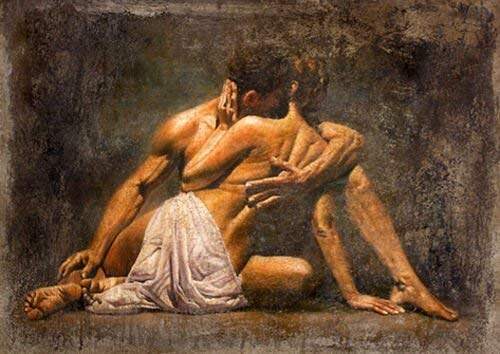lilies
The Living Force
My assessment as well. Raphael's paintings have, to my eye, foreboding and lifeless colors. His scenes are morose and even threatening. The faces of his subjects appear unreal. Same with his scenes being too simplified and he depicts people's bodies like plastic puppets. During his life, witch-burnings and the Inquisition was in full force.Preraphaelite paintings, in their close attention to details, create an atmosphere that is beyond time. It is dream-like, as in those dreams that are more real than real. So maybe, by this realism in oberving/knowing/loving nature, the senses border not on the fantastical, the imaginary, or the unreal as the author suggests, but on the edge that separates the real and the more than real if that makes any sense. Speculating here.
Whereas the paintings of Pre-Raphaelites are more realistic, beautiful and appear to have a calming, freeing effect. They lived hundreds of centuries apart, when the inquisition and witch-burnings effectively ended. Clearly, the time, when these artists lived, influenced their general emotional states as well and determined the feel of their work.
What I would put on the wall of my room is this one:
Mountaineer in a Misty Landscape, by the German Romantic artist Caspar David Friedrich.

and The Ninth Wave (1850, Russian Museum, Saint Petersburg), considered Aivazovsky's most famous work:

Anywhere else in the house:
The Morning Ride by Heywood Hardy

Winter Scene In Provincial Russia by Albert Nikolaevich Benois:










 It's maybe only for me but I think the beauty in anything is a deep feeling of relating to something.
It's maybe only for me but I think the beauty in anything is a deep feeling of relating to something.